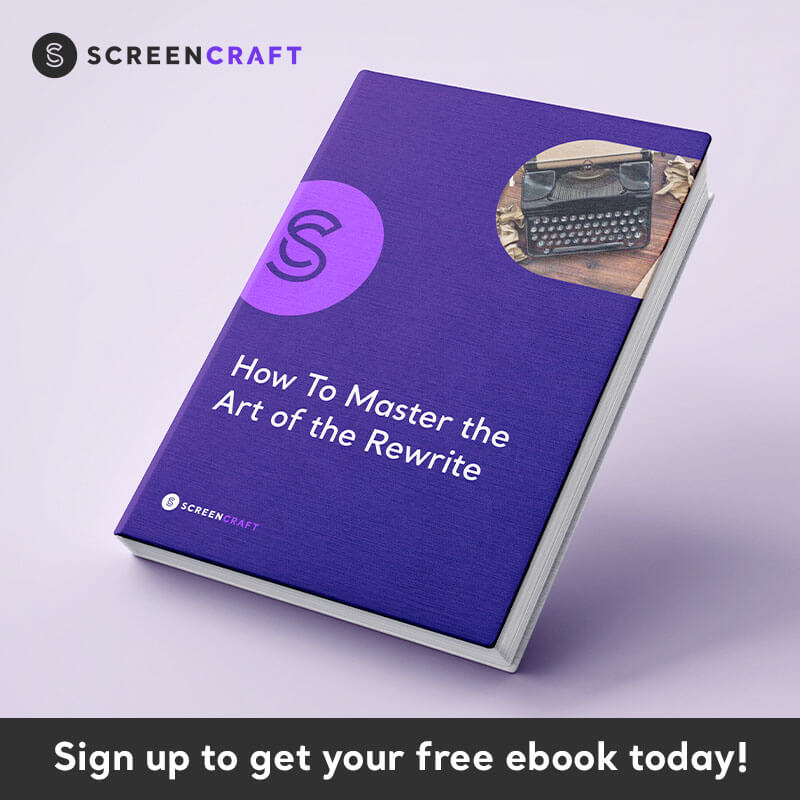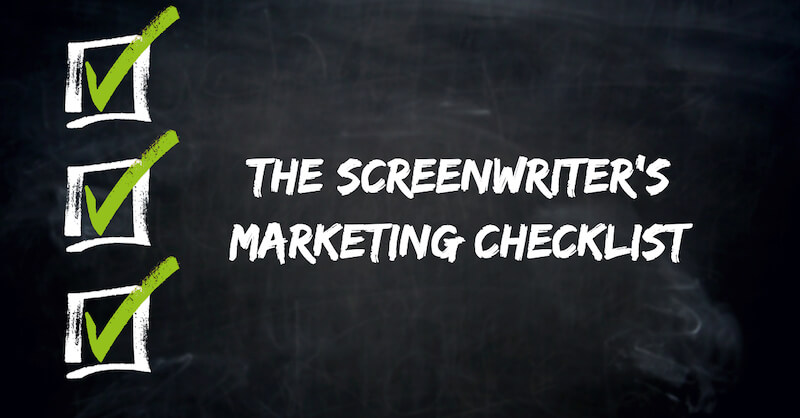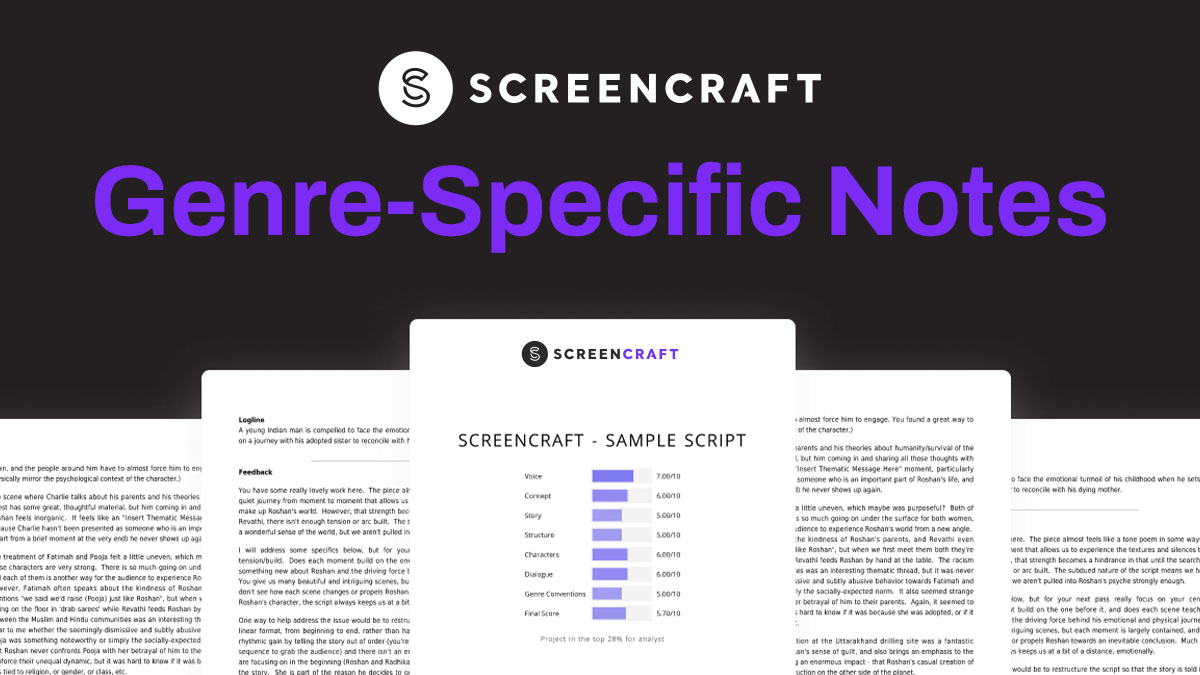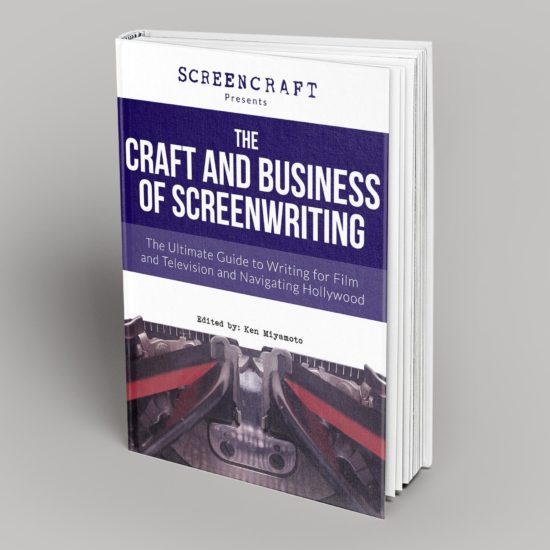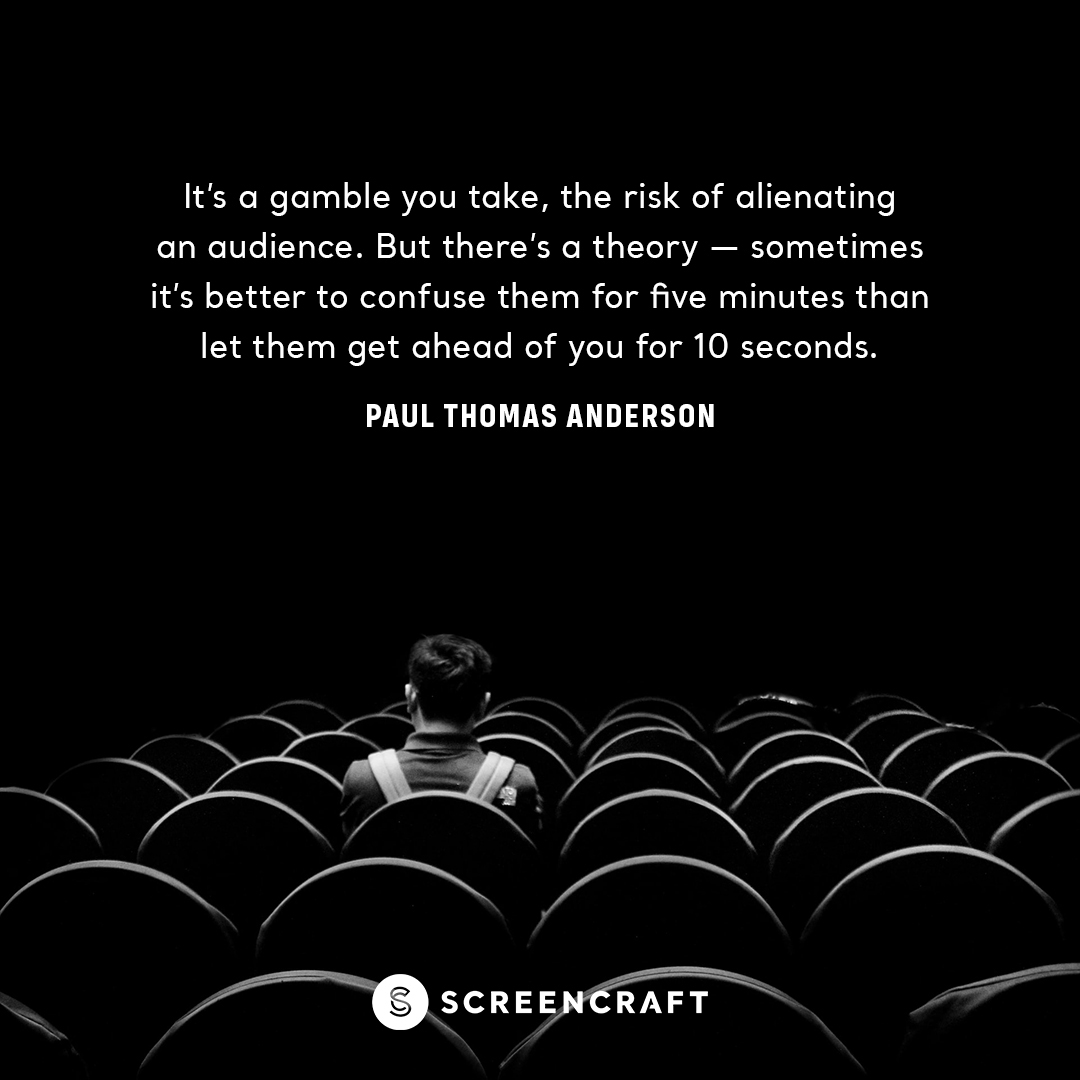9 Boxes to Check Before You Even Consider Marketing Your Screenplays

Do you have everything you need to start marketing your screenplays?
"Yeah, I just finished my first script. The final draft of it is done..."
"Yeah, I just placed pretty high in a contest and got some great notes..."
"Yeah, I just talked to this development executive at a writing conference during a social..."
"Yeah, I just found out that this company was looking for scripts like mine..."
"Yeah, I just discovered that my old college roommate's wife is a producer..."
If these answers to that important question are similar to what you see above, you need to stop, breathe, and check these seven boxes before you even consider making any calls, sending any emails, or arranging at sitdowns with industry insiders.
1. Do You Have Enough Output?
Having a couple of screenplays isn't enough, no matter how good you think they are or how great somebody said they were.
It's exciting to have one or two prospects. You're feeling the buzz of having a completed screenplay or two. You're excited. You're pumped. You can almost smell the Hollywood success coming your way.
Stop. Breathe.
Marketing your screenplays means making attempts to get your work out there for consideration. You're putting a metaphorical stamp on them that says, "Hollywood, I've got something amazing for you — something worth investing millions of dollars in."
The problem is that your first couple of screenplays aren't ready. You think they are, and they may represent a great concept, an interesting story, and some quality characters, but they are your first couple of screenplays. You're still honing your craft. And that takes time.
Before you market anything, make sure you have enough output. Make sure that you've honed your craft.
It would behoove you to take one to two years to focus on getting upwards of 3-5 amazing and polished spec scripts.

Why? Because the first question you'll be asked in emails, calls, or meetings is, "What do you have?"
For better odds of success, be able to check this box before you move onto the next.
2. Do You Have an IMDBPro Subscription?
Before you begin your marketing journey, you need this essential tool. It's well worth the monthly or annual cost.

This subscription offers you all of the information you need as you research your potential outreach.
3. Have You Done Your Research?
So let's assume that you have a good amount of output in the form of at least 3-5 amazing and worthwhile scripts.
Before you email that three degrees of separation industry contact or that slightly buzzed or outright drunk agent or manager you met at that film festival or writing conference social event, you need to do a lot of research.

First off, you want to research that individual. You need to see if they truly are what they say they are and then you need to take a look at their resume and get to know them.
While you're at it, put the brakes on contacting them right away until after you check off the rest of these boxes.
It's time to research who will be the best fit for your screenplay. You don't want to blindly blanket-market the industry with any Hollywood studio or company email address you can find. You need to do the research and see who is making the types of movies you're writing, who is writing them, and who is representing those writers.
4. Do You Have a Contact List with Multiple Potentials?
Once you start seeing which people and what companies may be right for you and your screenplays, you need to compile a list of those contacts, complete with their contact information and some notes on what types of projects they produce or represent.
Included in this list should be potential personal or professional contacts that you may already have.

Read ScreenCraft’s Maps Screenwriters Can Use to Build Their Industry Network
When you have boxes 1-4, you're ready to go, right?
No, we're not there just yet.
5. Do You Have Compelling Loglines?
Now it's time to start putting together your marketing material, which is an often overlooked part of the marketing process.
This marketing material starts with having a well-constructed logline.
Your logline is your selling point. In the end, that is all that will matter to the powers that be when they read that email query.
It doesn’t matter what genre you’re writing in. These loglines need to give a clear and concise view of what your project is and what the appeal may be.
A quirky family determined to get their young daughter into the finals of a beauty pageant take a cross-country trip in their VW bus. (Little Miss Sunshine)
A group of seven former college friends gather for a weekend reunion at a South Carolina winter house after the funeral of one of their friends. (The Big Chill)
A man creates a strange system to help him remember things so he can hunt for the murderer of his wife without his short-term memory loss being an obstacle. (Memento)
A thief who steals corporate secrets through use of the dream-sharing technology is given the inverse task of planting an idea into the mind of a CEO. (Inception)
When a teenage girl is possessed by a mysterious entity, her mother seeks the help of two priests to save her daughter. (The Exorcist)
A fast-track lawyer can’t lie for 24 hours due to his son’s birthday wish after the lawyer turns his son down for the last time. (Liar Liar)
Craft some amazing loglines that get to the core of each concept. If you need more examples of loglines, just go to your IMDBPro subscription and look up similar movies to your screenplays. The loglines are right there.
Spend plenty of time writing the loglines for your screenplays. Have your writing peers, family, or friends read and review them. And don't move onto the next box to check until you have outstanding loglines for those 3-5 amazing screenplays.
Read ScreenCraft's How To Write Effective Loglines!
6. Do You Have a Short Synopsis of Each Screenplay?
Here's a summary of a situation that nearly all screenwriters find themselves in at one time or another.
You jump the gun and market your screenplay. You either get nothing but rejection, or, worse yet, silence. But then somebody finally bites. You either email them or talk to them directly. They want to know more, and they ask you to offer up a synopsis of the screenplay's story. This leads to the harrowing experience of rushing to put together a short synopsis for your script. You'll spend sleepless and stressful nights trying to conjure one — trying to summarize your 110-page screenplay into three paragraphs. You'll be screaming in your head, "Why don't they just read the screenplay?! Why do I have to write this?!"
That's why you take care of business before you market one single script. That's why you read this checklist to save yourself time and agony.
A short synopsis is a page-long summary of your screenplay. The structure is relatively simple — one paragraph for the first act, one paragraph for the second act, and one paragraph for the third. Each paragraph offers the broad strokes of your story and characters — the core elements of your script.
Learn the best way to structure your screenplay with this free guide.
For a perfect example, go to a bookstore and read the back of any paperback fiction novel, and then give away the ending in the last paragraph.

Crafting a short synopsis for each of your screenplays before you market them will save you time and agony, we promise you.
7. Do You Want to Go the Extra Mile and Write a Treatment?
Treatments are meant to be read by others outside of the creative process as a means to convince the powers that be to either consider a screenplay in question for acquisition and production. It offers a creative overview.
These documents vary in length — depending upon the needs and wants of studio executives, producers, agents, and managers — and cover the more specifics of the story, utilizing prose in the forms of descriptive paragraphs that tell the story from beginning to end with all of the plot points, twists, turns, revelations, and character descriptions, but void of any dialogue (exceptions are sometimes made on that front).
Where a short synopsis would generally cover the broad strokes of the story within three paragraphs and one page, treatments include every detail of story and character so that those reading it will be able to get an idea of what movie they are considering to make.
Treatments, in these contemporary times, are also formatted as a sales pitch, beyond just the telling of the story. You can include elements like a general overview — which details the genre and type of story — as well as character breakdowns and setups.
Read ScreenCraft’s How to Sell Your TV Series the Stranger Things Way!
Some industry insiders request them, and some don't. But wouldn't it be nice if when they did, you had one ready to share?
8. Do You Have Pre-Written and Formated Query Letters?
Persistence is key. You'll be sending out queries for a long time before you hear from anyone. And even if you do hear from them, you can't put all of your screenwriting eggs in that one basket — you have to keep getting your script out there through continued marketing.
It will save you a lot of time if you have pre-written query letters. Then you can cut and paste the essential content into emails and tweak them as needed — as opposed to writing them anew each and every time.
Here’s how simple a query letter could be written, with different variations.
Example #1
Hi Steven,
Hope the week is going well. I’ve got a pulse-pounding suspense thriller called Jaws that I think would be great for Amblin.
When a great white shark begins to menace the small island community of Amity, a police chief, marine scientist, and grizzled fisherman set out to stop it.
It’s The Thing From Another World meets Moby Dick.
Would love to have you take a look. Thanks much and let me know.
Best,
Jane Screenwriter
Example #2
Hi Steven,
Hope the week is going well. Johnny Screenwriter here. Your driver George and I are old high school friends. He recommended I contact you for my spec script, Jaws.
When a great white shark begins to menace the small island community of Amity, a police chief, marine scientist, and grizzled fisherman set out to stop it.
It’s The Thing From Another World meets Moby Dick.
Would love to have you take a look. Thanks much and let me know.
Best,
Johnny Screenwriter
Example #3
Hi Steven,
Hope the week is going well. I’m a former studio reader for Sony and used to work under John Calley, whom I’m sure you remember.
I’ve got a pulse-pounding suspense thriller that I think would be great for Amblin.
Jaws
When a great white shark begins to menace the small island community of Amity, a police chief, marine scientist, and grizzled fisherman set out to stop it.
It’s The Thing From Another World meets Moby Dick.
Would love to have you take a look. Thanks much and let me know.
Best,
Johnny and Jane Screenwriter
Note: We’re being tongue-in-cheek with using Steven Spielberg as an example. Don’t try to contact him or anyone of his stature through email. It won’t happen.
Read ScreenCraft's Writing the Perfect Query Letter for Your Scripts!
9. Are You Ready, Willing, and Able to Accept and Embrace Rejection?
Every screenwriter in the world will experience more rejection than they will acceptance and success.
There's no escaping it. Part of marketing your screenplays is hoping for the best but preparing for the worst. And with every rejection you receive, use it as a learning tool.
And then move onto the next.
You have no control over who is going to love, hate, or be indifferent to your logline, query letter, or screenplay. All that you can do is get your screenplay out there to be a part of the overall conversation.
❑ Do You Have Enough Output?
❑ Do You Have an IMDBPro Subscription?
❑ Have You Done Your Research?
❑ Do You Have a Contact List of Multiple Potentials?
❑ Do You Have Compelling Loglines?
❑ Do You Have a Short Synopsis of Each Screenplay?
❑ Do You Want to Go the Extra Mile and Write a Treatment?
❑ Do You Have Pre-Written and Formatted Query Letters?
❑ Are You Ready, Willing, and Able to Accept and Embrace Rejection?
When all of these are checked, you're really ready to start marketing your screenplays!
Ken Miyamoto has worked in the film industry for nearly two decades, most notably as a studio liaison for Sony Studios and then as a script reader and story analyst for Sony Pictures.
He has many studio meetings under his belt as a produced screenwriter, meeting with the likes of Sony, Dreamworks, Universal, Disney, Warner Brothers, as well as many production and management companies. He has had a previous development deal with Lionsgate, as well as multiple writing assignments, including the produced miniseries Blackout, starring Anne Heche, Sean Patrick Flanery, Billy Zane, James Brolin, Haylie Duff, Brian Bloom, Eric La Salle, and Bruce Boxleitner. Follow Ken on Twitter @KenMovies
For all the latest ScreenCraft news and updates, follow us on Twitter, Facebook, and Instagram.
Tags
Get Our Screenwriting Newsletter!
Get weekly writing inspiration delivered to your inbox - including industry news, popular articles, and more!

